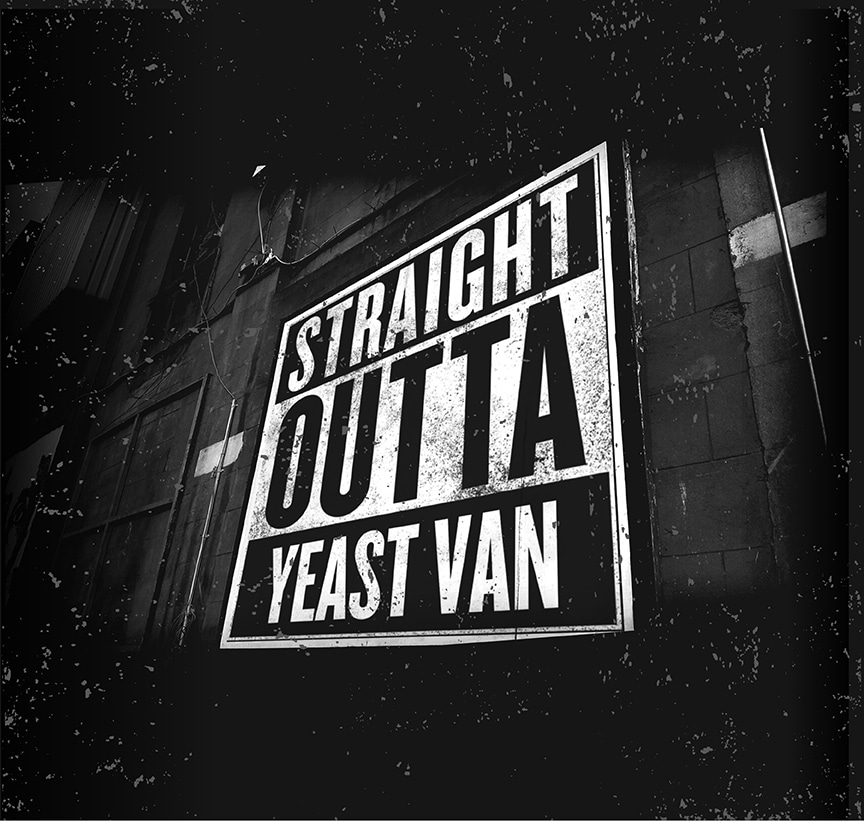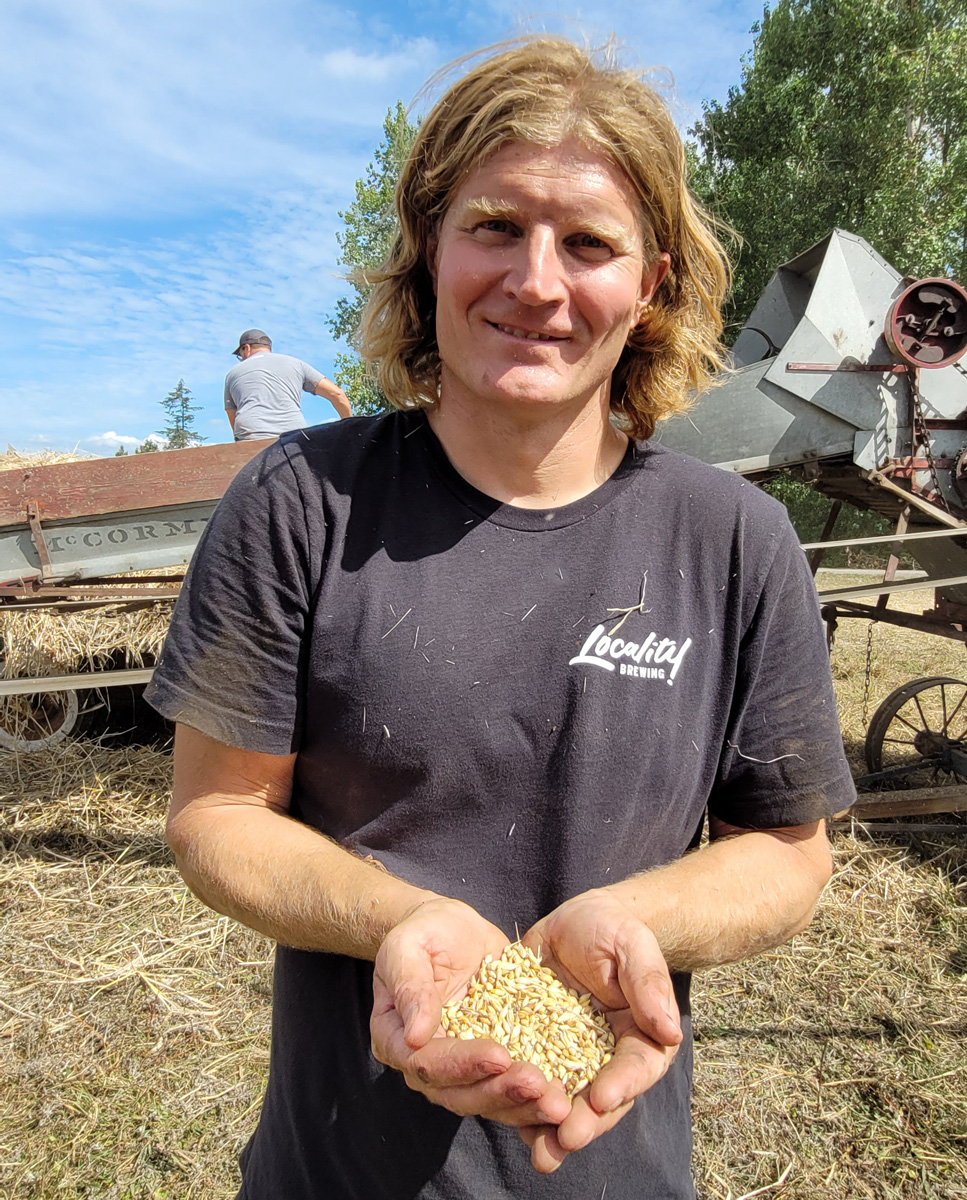
Craft brewing has become big in B.C.–but what about craft malting? The maltster’s craft is a specialized one, comprising both art and science. The malting process involves steeping grains in water, allowing them to germinate, then roasting them in a kiln. This process is critical as it allows the starches in the grain to be converted into easily fermentable sugars and prolongs its shelf life, almost indefinitely. The longer the roasting time, the more browning and caramelization occurs, resulting in a darker, sweeter beer.
Despite the grain bill being so integral to a beer’s flavour, malting has always lived in the shadow of its more popular sibling, brewing. It’s time to bring it into the light.
Making Malting History
The history of malting and brewing run alongside and across one another. Big breweries in the Middle Ages would often malt their own grain (they had the money and space needed), while smaller brewers and households patronized maltsters who set up shop in town markets.
When European immigrants settled in B.C., brewing was one of the earliest industries to take root. Although most of the earliest brewers also malted their own grain, the increasing number of breweries after 1880 meant that brewers relied on malt imported from the large facilities in the US.
In 1891, when there were only five malthouses in all of Canada, Vancouver’s Columbia Brewery was the first post-1880 brewery to become truly local and make its own malt (from Lulu Island barley). Papers happily speculated that the “venture may lead to others doing likewise and thus add further to the growth of local industries and general provincial prosperity.” Columbia continued malting and selling malt to other breweries until at least 1896.
By 1900, however, local malting had disappeared. Seeing an opportunity, beer baron Henry Reifel lobbied for B.C. farmers’ support to build a malt house near his Union Brewery in Nanaimo. By 1910, Reifel had also built Canadian Brewing and Malting in Vancouver, a huge facility that fell under BC Breweries—a business that would eventually become part of what is now Molson-Coors.
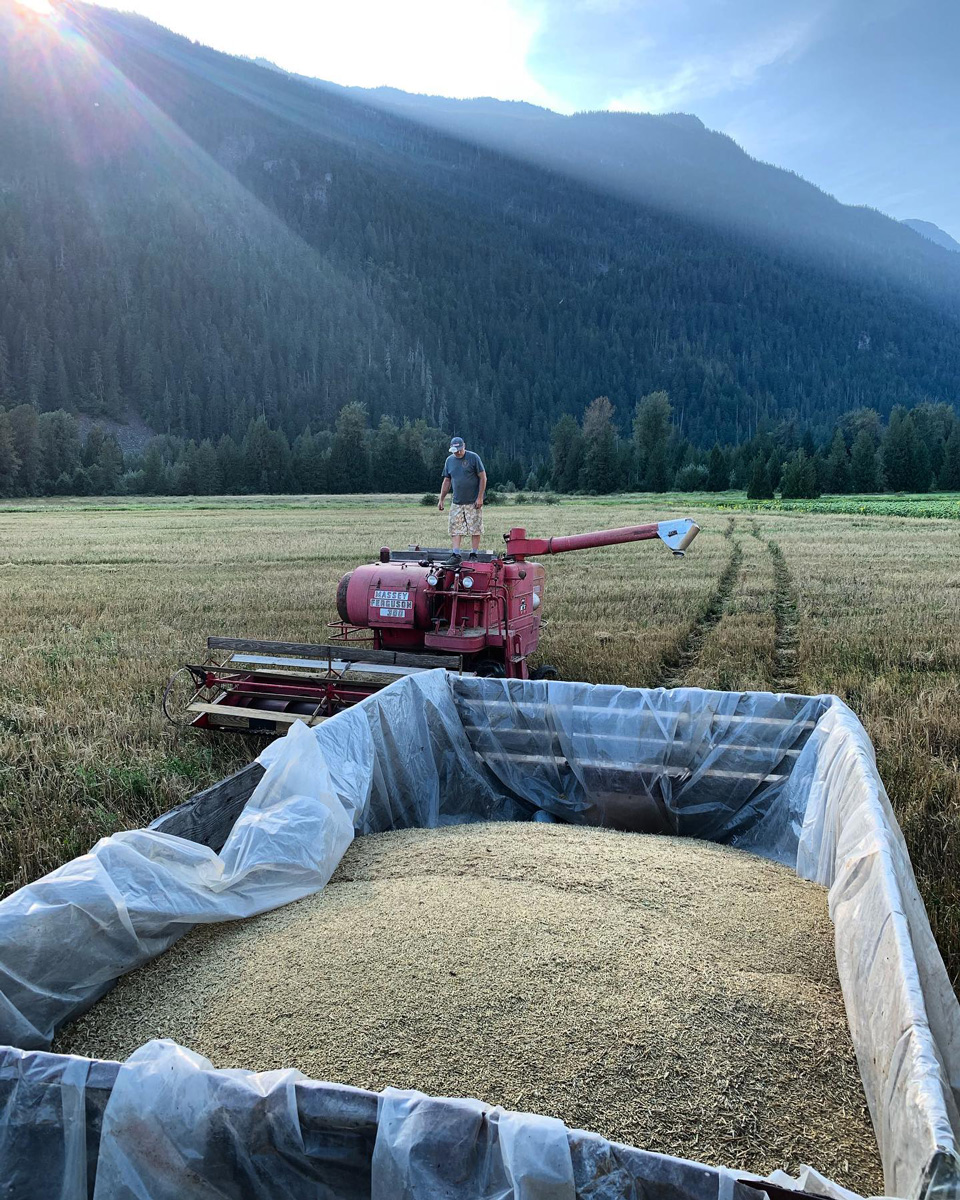
B.C.’s New Maltsters
Reifel’s idea of a malting/brewing partnership connecting brewers with farmers never fully blossomed. However, his passion is currently being resurrected. So far, three craft breweries in B.C. now have malthouses: Phillips Brewing & Malting in Victoria, Locality Brewing in Langley, and the Beer Farmers in Pemberton. However, with the support of organizations such as the Craft Maltsters Guild, many others are starting to use local maltsters’ services. Numerous B.C. breweries purchase malt from Field Five Farm in Saanichton. Longwood Brewing in Nanaimo uses White Malting. Locality plans to produce specialty malts for other breweries. And there’s more to come.
Field Five Farm has been a driving force behind independent malting in the province.
“They’re incredible!” Locality’s Andy Hamer says of Field Five. “They’ll be huge in this space [of local malting]–a craft malt house selling to multiple breweries.”
Field Five emerges from a long tradition of family farming. Co-owner Kyle Michell and his wife have been farming grain since 2015 (they now have 15 varieties) and malting it since 2021. Every eight days, Field Five malts five tonnes of grain under the direction of maltster Mike Doehnel, who has been floor malting in his home for decades. Phillips Brewing was one of their first customers, but Field Five now has a bustling business providing malt to B.C.’s craft breweries.
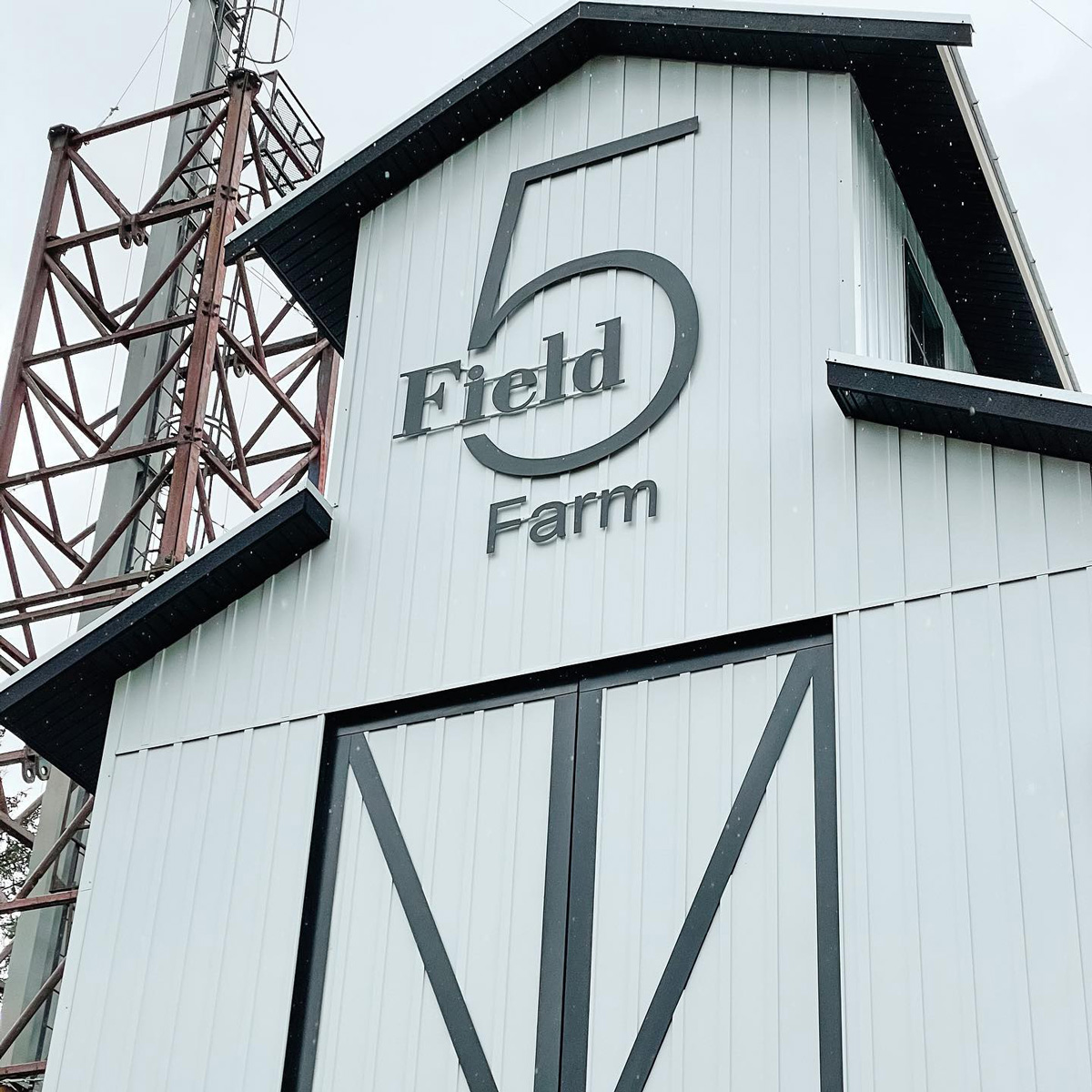
Why We Need Craft Malting
Gambrinus Malting Corporation in Armstrong has been the main B.C. malthouse for decades. Breweries can send their grain there to be malted, or they can buy ready-to-use malt–with the option of selecting B.C.-only grains. For many breweries, Gambrinus is the closest thing to a local maltster. However, even though Gambrinus isn’t nearly as big as global malting juggernaut Canadian Malting Co., it still requires minimum batch sizes for their malting services. This makes things challenging for small breweries who might grow or source their own barley but don’t have their own malthouse. The Beer Farmers and Abandoned Rail both fall into that category. There are also shipping costs. While Gambrinus is located in B.C., for some breweries, Armstrong is a long way away and they feel the financial pinch when it comes to transporting grain. Introducing craft malthouses in key areas of the province, such as the Lower Mainland, would meet the needs of the rapidly growing beer industry and fill a gap in the market.
There are tangible benefits for breweries who use craft malt. Vancouver Island breweries find the transport costs particularly prohibitive, since the grain needs to go across the water to get to Gambrinus. Field Five’s presence on the Island has created an environment in which craft malting can thrive. Island breweries save on shipping and support the agriculture industry by simply buying their malt locally.
Decreased shipping means a decreased carbon footprint, which is part of the reason Matt Phillips of Phillips Brewing decided to build his own malthouse. Maltster Alexander Schneider transfers the malt to the brewhouse next door with minimal “touches,” thus reducing carbon emissions further. According to Phillips, the brewery’s craft malting program also builds strong relationships with local farmers and boosts the beer industry as a whole.
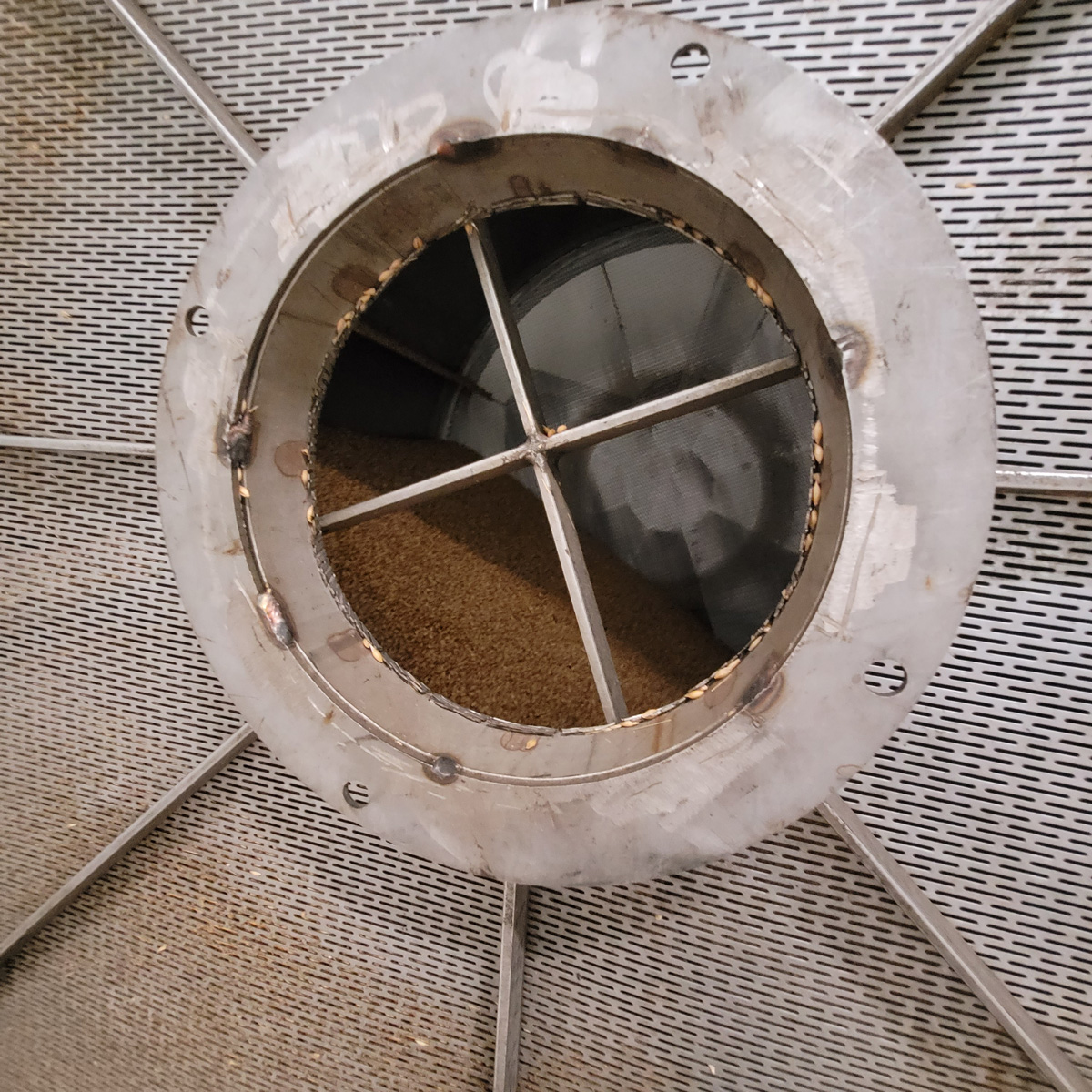
The Beer Farmers began malting when they realized that their little farm brewery couldn’t make enough grain to fulfil Gambrinus’s requirements for batch size. Instead, the Beer Farmers use Field Five for half their malting needs, and they do the rest in-house. Their small, makeshift malting system is unusual, but it has led to some delicious beers. Turner says that his brewery has embraced the inconsistency of a small malting program and used their house-malted grain for specialty beers where the unique flavours can truly shine.
For some, Gambrinus is the best option: Lillooet Brewing, like many breweries in B.C., prioritizes local production and takes advantage of Gambrinus’s B.C.-only malt offerings. Barnside Brewing in Delta grows its own barley and malts its base grains at Gambrinus, but uses Locality for smaller batch specialty malts. Penticton’s Abandoned Rail, on the other hand, is too small for Gambrinus, so they send their grain to the independent Red Shed malthouse in Alberta.
But these options aren’t enough. B.C.’s craft beer industry, led by the Craft Brewers’ Guild, is lobbying the government to incentivize malting in the province. Many breweries are calling for a craft malthouse in the greater Vancouver region, citing Red Shed as a model. The decrease in shipping costs and emissions would benefit everyone.
There’s also the issue of government markups. Unlike wineries, B.C. breweries don’t receive a financial benefit for using B.C. ingredients. According to Barnside’s Ken Malenstyn, reducing the 40 cents per litre provincial markup for breweries using local malt would incentivize growth in brewing and malting, boosting both brewers and farmers.
Ultimately, craft malting is the natural extension of what craft brewing is all about. People love craft beer because it uniquely embodies their local community. Similarly, craft malt connects the final product—the beer—to the local land in a tangible way.


